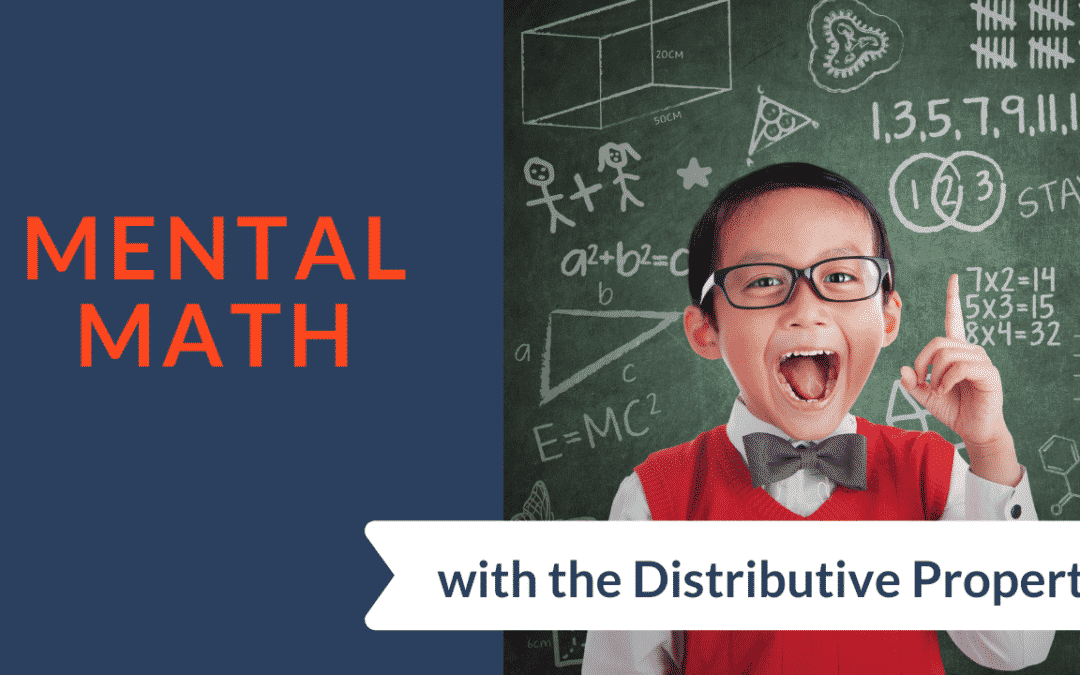One skill that our students need to excel now in the elementary years and into their high school years is mental math and using the distributive property. Join Adrianne as she talks about the skills that can be taught in the early school years and how they tie into higher levels of math like algebra.
We offer all online math services featuring the multisensory math method which you can learn about here: madeformath.com/services
TRANSCRIPT
Now, with my students, we do a lot of ground work before we start minimizing this distributive property and we begin by learning what numbers are made of, so part of their number sense. And a lot of my students, even though they are on the older side, they do not have a really good number sense and so we go back to place value. And then we start practicing this mental math every single time we meet together. Let me show you how this strategy works. Now a lot of students when they see 21 times 8 they’re thinking, “Oh, my goodness. That’s way too big of a number. I can’t do that math.” But when I ask them, “Well, what’s 21 made of?” That strikes up some curiosity for them and so we actually will type that out. Well, 21 is made of 20 and one. Okay, good. So 21 is made of two 10s and one one and then we have this eight out here, which we can distribute.
And so I’m showing visually the mental math that happens but we practice talking about this so we start with the 20 there and we say, “Well, what’s eight times 20?” And we think about it. Okay, that’s 160. Great, we’re gonna hold that number in our mind so we say it three times to ourselves, 160, 160, 160. That’s our first distribution, eight times 20 is 160. Then the next one we do says eight times the one which is eight and so we say, “What’s eight times one?” It’s eight. What’s the first number? 160. What’s the answer? 168. So that’s how the mental math part of the distributive property works, which is a really powerful tool especially as you get older. So let’s walk through a few more examples and then I’ll show you how it ties into the higher levels of math.
So here we’ve got that five times 42. So again I say, “What’s 42 made of?” Well, it’s made of 40 and two. Okay, great. It’s made of 40 and two. So now we’re gonna distribute that five, we’re gonna multiply it out. Let’s scoot that little closer. And I’ll start with the 40. What’s five times 40? Oh, that’s 200. Okay. Hold that number in your head, 200, 200, 200. Now let’s do the next one. Five times two? That’s 10. So our answer all together, the 200 and the 10, 210. And so students start seeing like, “Oh, I can do this. I can do this.” And this is actually a lot faster than pulling out that calculator and sometimes my students get so distracted when they go to get that calculator out, we see a notification on their phone or they see that Instagram button and they’re completely lost on what they were doing and so practicing this mental math is a really important part.
So let’s do another one. Now you might be wondering, “Well, what about more than one digit times two digit?” So let’s look at that. Same kind of question happens here. So what’s 12 made of? Well, it’s made of one 10 and two ones. And then we have 31. What’s 31 made of? Well, 30 and one. Okay? Now we need to talk through this a little bit. So that is happening is we need to distribute the two to each one of these and then we need to distribute the 10 to each one of these. So let’s walk through that. We’re gonna start with the two. So I’m gonna write it out so you can see it. Two times 30. Well, that’s 60. Great, let’s move to the next one. Two times one is two and we’re holding these in our head by the way. Now let’s move over to the 10 and the 12. We’re gonna do 10 times the 30 and that is 300. And then we have the 10 times the one. And we have distributed everything out. Okay?
And now the student just needs to add those together so we have 300, the 60 and the 10, that makes 370 and the answer is 372. And this is huge, this is such an important skill and one they’re going to use as they approach middle school and they go into high school and they’re doing higher levels of algebra. So I’m gonna show you the connection now. So this is a skill that we practice every day when we’re working with students for Math for Middles, the mental math using the distributive property. But when we get to algebra I’m sure you’re remembering now. This is the distributive property where multiplying an x to everything inside the parentheses and this is what our number’s made of. And so going back to this to look really quick, what’s 31 made of? Three 10s and one one. What’s 24 x plus eight? Well, it’s made of 24 x’s and eight one and we can distribute again and this will seem supernatural to the students because they’ll already have had a lot of experience with it.
So when we have two x’s multiplied together we get the x squared so we have 24 x squared plus an eight x. Try that again. There we go. And we distributed the x to the eight and so now you can that the distributive property is super valuable. We’re using it a lot when we get into algebra. And then it becomes really useful when we get to this kind of stuff. Now when I went to school everyone loved FOIL, right? First, outside, inside, last. They still are using this to this day. However, for our students who struggle with directionality, remembering what’s left or right, this a mess for them. It’s really hard. But when we master that distributive property this becomes a lot easier where you don’t have to rely on that acronym. We can just apply the distributive property. So I’m gonna draw some arrows here so we’re gonna distribute the three. We’ll distribute that first and then the three to the five, right?
So let’s multiply. We have three x and three times five, that’s 15. That’s our first one. Now we can distribute the second one. So we’re gonna distribute the x here to this x and then the x over here to the five. Let’s do that. Distributed to the second x is x squared. Okay. And then we have x times the five and we have five x. Okay. And then it comes up to the child, we need to combine like terms so we’re gonna combine those together and we’ll get the x squared and I can’t see. Let’s see I’m gonna hit done for a second. Here we go. X squared and then we have three x plus five x so that’s eight x and the 15 at the end. So now you can see how that distributive property plays into where they’re moving in the future and so learning it when you’re younger is really helpful and this part doesn’t make it so scary. So I love that my students are getting comfortable with it and using for mental math, which is awesome.
And so Mary Kate, you’re sharing a comment and so I’m gonna repeat it out loud. So she’s saying, “My son’s third grade curriculum is using the distributive property.” Hooray, not all of them do as a way to recognize factors of six and seven. “They might not know four times seven but they are likely to know four times two and four times five.” Love it. Ah, that decomposing of numbers, that’s fascinating and I love that. Mary, hooray. Applaud your teachers. That’s awesome because a lot of teachers just harp on memorization of those math facts but I love that they can decompose that seven and so that is a fantastic strategy and a lot of students are struggling with numbers above six, so seven, eight and nine and so using that strategy is so helpful. So if you’re not sure what I’m talking about, I’m gonna show them really quick, Mary Kate.
So like she was saying, okay, my student is trying to do four times seven and if they’re anything like my students, okay, that is a math fact that’s super hard for them and very frustrating. They could come with a different way to name that seven. They could decompose it, which means to break it apart so they could so two and a five. That’s a brilliant strategy here. Okay? And we use the parenthesis again as a grouping symbol and then we have this times four out here, which is what we was talking about. So this four times two, that’s eight and then we have four times five. That’s 20 and again they can get back to the math fact which is 28. I adore this strategy because it’s so smart and it helps our students become very flexible thinkers when it comes to math and not this skill set of rote memorization.
So bravo, Mary Kate. I am super excited about that and I would love to know the name of the curriculum that your son is using at their school because a lot of curriculums are not using that so I would love to know what your school is using. That would be super fascinating. So the distributive power is super awesome. It’s one of my favorites and it’s a skill that every student needs to have in their back pocket when they arrive to the middle school years. So if you would like some help getting your child these kinds of tools in their tool belt reach out to us. We’d be happy to help you. We work with students anywhere from fifth grade all the way up into high school here at Math for Middles and all of us are trained in multi-sensory math and we use a lot of these strategies every single day. We work on that mental math piece like I showed you.
So if you are curious and want to learn more about that head over to madeformath.com. We would love to help you and we always do a free trial so that you can see what tutoring is like. I appreciate you being here and Mary Kate, thank you so much for contributing to the conversation. I hope you’ll join me again next Tuesday and we’ll talk more about strategies that your student needs to be doing really well in school. Thanks so much and have a great day. Did you like our math video? Make sure to send in your questions and we’ll answer it the multi-sensory way. Don’t forget to subscribe, share and like our videos.

